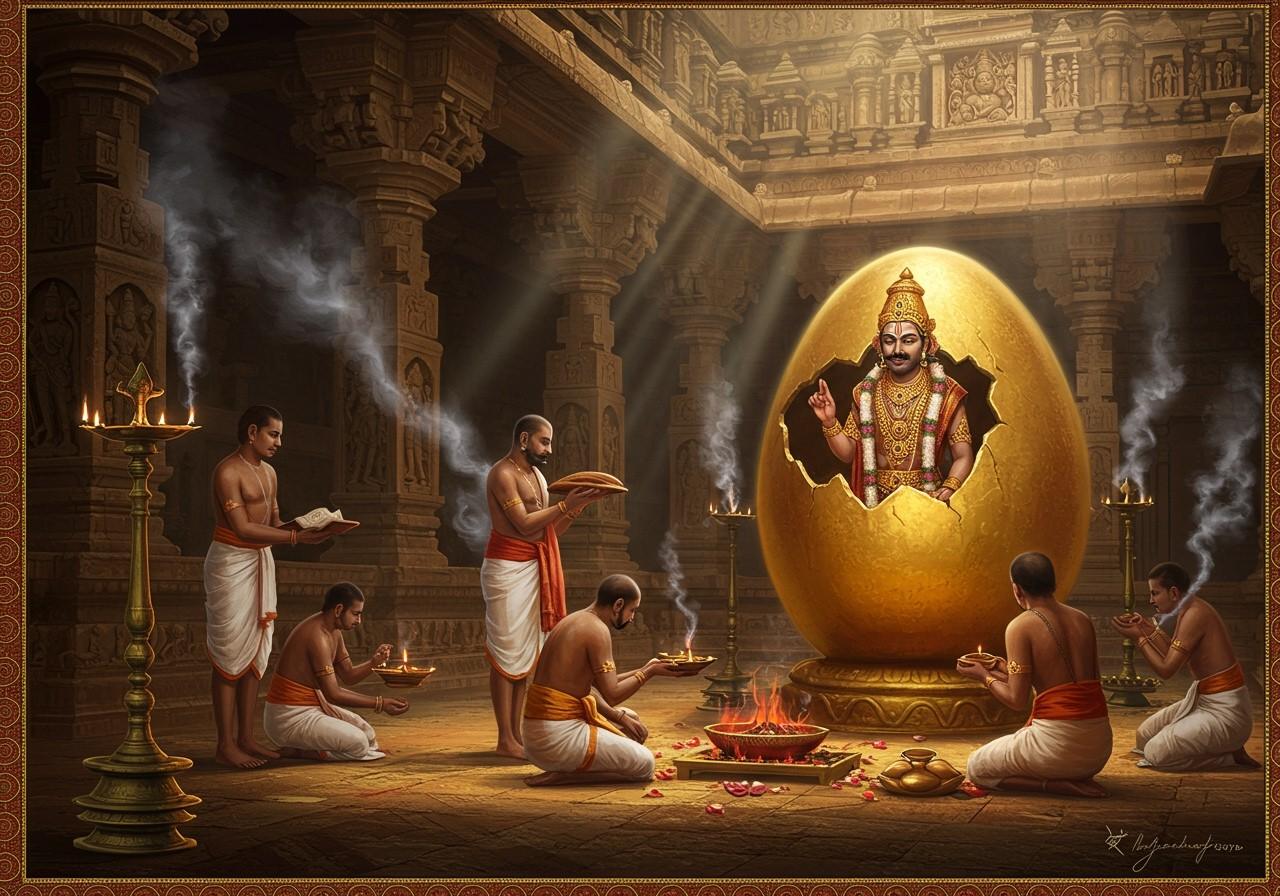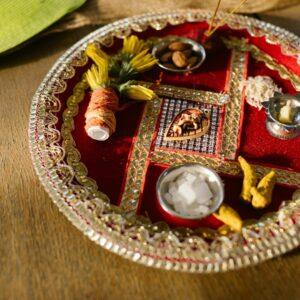
The Hiranyagarbha ritual stands as a pivotal moment in Indian history, particularly during the reign of Dantidurga, the founder of the Rashtrakuta dynasty. This ancient ceremony signified a transformation in traditional practices, interweaving spiritual and political ambitions. To grasp its significance, we must delve into the 8th-century socio-political landscape of India, where such rituals played a vital role for rulers seeking to establish their legitimacy and authority.
Historical Context of the Hiranyagarbha Ritual
Understanding the Hiranyagarbha Ritual
The Hiranyagarbha ritual, a Vedic ceremony symbolizing the ‘golden womb’ and rebirth, was typically performed by kings to secure divine favor and affirm their Kshatriya status. Rooted in ancient texts like the Rigveda, this ritual held immense importance in establishing both cosmic and royal legitimacy. By undertaking this ceremony, rulers solidified their power and reinforced their position within society. This ancient Indian ceremony, associated with the god Vishnu, is one of the “Sixteen great gifts” and was used by Hindu kings to elevate their caste status. The term “Hiranyagarbha” literally means “golden womb.”
Components of the Ritual
The ritual involved elaborate offerings, recitations, and symbolic elements. The use of gold, representing purity and divine connection, along with sacred fire, signifying transformation and rebirth, were central to the ceremony. These components were crucial in aligning the ruler with cosmic forces, thereby legitimizing their reign from both spiritual and political perspectives. Dantidurga, a Rashtrakuta chief, performed the Hiranyagarbha ritual in the mid-eighth century after overthrowing his Chalukya overlord. The ritual, which involves the donation of a golden vessel, is meant to symbolize the “rebirth” of the sacrificer as a Kshatriya, even if they were not one by birth.
Dantidurga’s Reasons for Performing the Hiranyagarbha
Dantidurga, a visionary leader, recognized the Hiranyagarbha ritual’s potential as a powerful instrument. The ceremony symbolized rebirth, transforming him into a Kshatriya, a warrior king, irrespective of his birth status. It served as a declaration of independence from his Chalukya overlord, sending a clear message to both adversaries and subjects. More information about the history of the Hiranyagarbha ritual can be found on this blog post about Hayagriva Madhava Temple.
The political climate of 8th-century India was intricate, with numerous rulers vying for divine endorsement to bolster their claims to power. Dantidurga understood that the Hiranyagarbha ritual could solidify his legitimacy and elevate his standing. This ritual was also a way to connect with the divine and seek blessings for a prosperous reign. You can find additional details on rituals and their significance in this guide to Durga Puja rituals and celebrations.
Brahmins held a crucial role in this process, providing the necessary spiritual sanction for Dantidurga’s ascent. Their endorsement added layers of legitimacy to his reign, fortifying his position within the Rashtrakuta dynasty and among neighboring states. You can learn more about creating a sacred space for rituals in this guide to setting up a home puja room.
The Performance of the Hiranyagarbha Ritual under Dantidurga
The execution of the Hiranyagarbha ritual required meticulous planning and adherence to tradition. The priestly class oversaw the ceremony, ensuring every detail aligned with established customs. Selecting an auspicious date and location was paramount, as these elements were believed to harmonize with cosmic forces. Pooja kits and online guides can simplify the process of performing such rituals. The selection of pure and authentic materials was also essential for the ritual’s efficacy.
Impact and Legacy of the Hiranyagarbha Ritual
The ritual’s impact on Dantidurga’s reign was substantial, elevating him to the status of a divinely appointed ruler and fostering political alliances. It unified his kingdom under a shared cultural and religious framework, strengthening the Rashtrakuta dynasty’s grip on power. This act had a ripple effect, influencing subsequent rulers who recognized the strategic advantage of integrating spiritual and political aspirations. Learn more about essential puja items in this guide to essential puja samagri.
The Hiranyagarbha ritual’s cultural significance extended beyond individual rulers like Dantidurga. It reinforced societal hierarchies and the divine right of kings, with commoners, nobles, and religious figures interpreting its meaning through the lens of their respective social standing. Its legacy continues to resonate in Indian culture, shaping perceptions of power and divinity. This ancient tradition offers invaluable insights into the intricate interplay of religion, politics, and culture in medieval India.
Poojn.in: Your Source for Ritual Needs
The Hiranyagarbha ritual necessitates specific sacred items and materials, which must be pure and authentic. Poojn.in provides a comprehensive selection of essential items for this important ceremony:
- Pure copper and brass kalash sets: Essential for the ritual, these are crafted with high-quality materials and traditional designs. Available in various sizes to suit your needs.
- High-quality puja samagri kits: Containing all the necessary ingredients for the ritual, these kits ensure convenience and authenticity. Prepared with utmost care to maintain purity and sanctity.
- Authentic red cloth (raktavastra): Used for ritualistic purposes, our red cloth is made from pure, natural fibers. Available in different sizes and qualities.
- Traditional dhoop and deep items: Create a sacred atmosphere with our range of traditional dhoop and deep items. Crafted with care and attention to detail.
- Pure ghee for havan purposes: Sourced from trusted suppliers, our pure ghee is ideal for havan and other rituals. Packaged to maintain its purity and freshness.
Visit www.poojn.in today to explore our collection and order the necessary items for your Hiranyagarbha ritual. We offer secure packaging and delivery across India.
Conclusion
The Hiranyagarbha ritual remains a powerful symbol of the interplay between faith, power, and tradition in ancient India. Dantidurga’s embrace of this ancient ceremony not only solidified his reign but also enriched the cultural and spiritual tapestry of the Rashtrakuta dynasty. It serves as a testament to the enduring influence of rituals in shaping destinies and inspiring generations.


